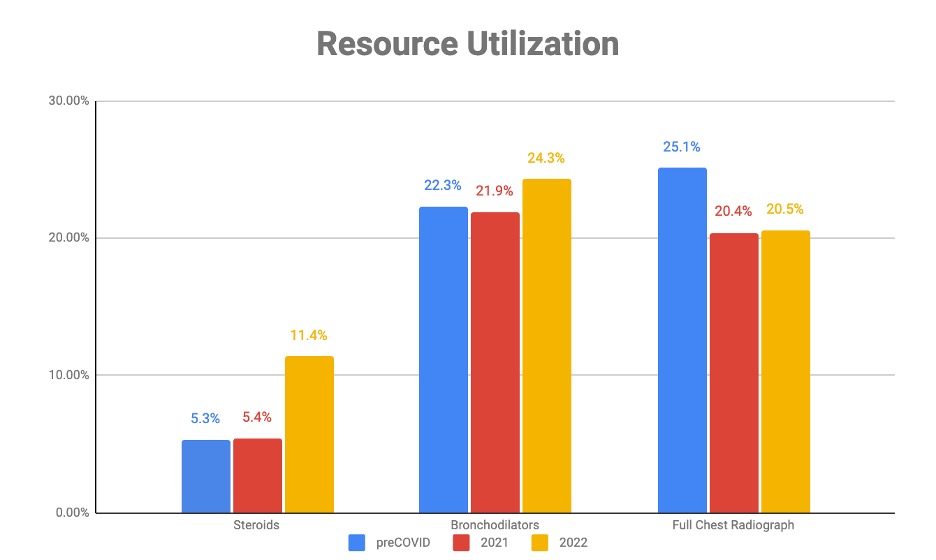Emergency Medicine: Quality Improvement
Emergency Medicine 10
468 - Resiliency of a Bronchiolitis Clinical Pathway during Unexpected Respiratory Virus Surges
Publication Number: 468.309

Sidney Stewart, DO
Resident
Connecticut Children's Medical Center
Vernon Rockville, Connecticut, United States
Presenting Author(s)
Background:
Clinical pathways improve high-value care for common conditions such as bronchiolitis. The resurgence of bronchiolitis in the summer of 2021 and marked volume surge in 2022 challenged many Emergency Departments (ED). Little is known about pathway adherence during the COVID-19 pandemic or unexpected viral surges.
Objective:
To evaluate adherence to the bronchiolitis clinical pathway during the pandemic and amidst a bronchiolitis surge.
Design/Methods:
This is a retrospective cohort study performed in a pediatric tertiary care center ED. We used the hospital’s bronchiolitis clinical pathway quality metrics as our data source to evaluate 3 time periods: pre-COVID: 1/1/2018 - 12/31/2019; wave 1: 6/1/2021- 9/1/2021 and wave 2: 9/1/2022-10/31/2022. Included were children birth to 24 months and excluded were children born premature, or with respiratory, cardiac, congenital, or neuromuscular diseases. Adherence was assessed by following the proportion of patients receiving non-routinely indicated interventions [bronchodilators, steroids, and chest radiographs (CXR)] over time.
Results:
Of 2,425 children, 1,445 were evaluated in the pre-COVID period, 392 in wave 1, and 589 in wave 2. Children in these periods had similar sex, race, and insurance. As seen in Figure 1, bronchiolitis began unseasonably early in wave 1, and volume of bronchiolitis cases in wave 2 was substantially increased compared to years prior. Admission rates increased from 26.4% pre-COVID to 34.8% (p=.002) in wave 1 and 39.4% (p< 0.01) in wave 2 (Figure 2). Bronchodilator usage was similar between all time periods (22.3% pre-COVID, 21.9% in wave 1, 24.3% in wave 2). CXR rates decreased from pre-COVID rates of 25.1% to 20.4% (p=0.05) in wave 1 and 20.5% (p=0.03) in wave 2. Steroid use increased during wave 2 at 11.4% up from 5.3% preCOVID (p< 0.01) and 5.4% in wave 1 (p=0.001).
Conclusion(s):
The institution’s bronchiolitis clinical pathway proved resilient during a pandemic and an unprecedented surge of patients with bronchiolitis in 2022. Bronchodilator usage was unchanged and CXR usage decreased, suggesting that the evidence-based clinical pathway continued to positively impact patient management, despite the higher overall volumes and higher percentage of patients presenting sicker than in pre-pandemic bronchiolitis seasons. Circumstances for significantly increased steroid use need further investigation, and future quality improvement efforts will be directed at this pathway deviation..jpg)
.jpg)

